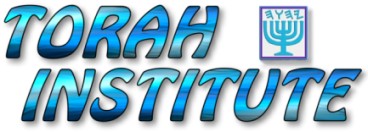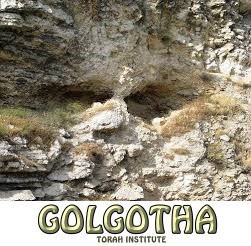

THE QUESTION:
HOW DID YAHUSHA AND PILATE HAVE A CONVERSATION WITH ONE ANOTHER?
The region of the world called the “holy land” is also known as “the Levant” by
scholars.
Because it connects three vast continents, it became multi-cultural due to the
trade routes.
Inns and vacation spots would have been commonplace, as well as commerce of
every kind.
The road passing outside Yerushalayim would have had people of the three main
language groups (Hebrew, Greek, and Latin) continually walking on it.
One of the features along this road was widely-known by people far and wide:
GOLGOTHA, the place of the skull.
Gulgoltha was its Hebrew name, but the Latin word was Calvariae Locus
(place of the skull). The Greek is kraniou topos.

Being the Creator incarnate, Yahusha spoke all the languages placed on the
document Pilate ordered to be placed on His stake.
Most of His talmidim were far more limited in their ability to speak foreign
tongues, and being observant Hebrews they studied Torah in Hebrew.
Some of them may have been unable to read and write. This meant they were
possibly “illiterate”, unskilled with “letters”.
Acts 4:13 is a record indicating Peter and Yahukanon were “unschooled” men and
possibly unable to read and write.
Peter used a scribe, dictating his letter to Sila:
1Pe 5:12
“Through Sila the trustworthy brother, as I reckon, I have written to you
briefly, encouraging and witnessing that this is the true favor of Alahim.
In this stand fast.”
The Sanhedrin would have conducted their affairs in Hebrew, certainly not Greek
or Latin.
Pilate may have known a little Hebrew as well, being sent to an area speaking
that tongue, and being an educated man probably also knew Greek.
One of the soldiers escorting Paul was shocked when he heard Paul ask him a
question in Greek:
Act 21:37:
“And as Paul was about to be led into the barracks, he said to the commander,
‘Am I allowed to say something to you?’ And he said, ‘Do you know Greek?’”
The primary language of Yerushalayim, and to the north Shomeron (Samaria), would
have been Hebrew.
We can’t say for certain whether Pilate addressed Yahusha or the throng in
Hebrew, but since they were all speaking back and forth, it is more likely to
have been Hebrew, since a ruler yelling out Latin words to a throng that mainly
spoke Hebrew would seem a little odd.
Paul taught both Yahudim and Greeks, and most likely used the accurate Hebrew
words for names and places. He would have generally used Greek to those who
understood only Greek, but he had no reason to hide the true Name of the One who
knocked Him down on the way to Damascus.
He would have told the Greeks the Name was Yahusha, the only name given among
men by which we must be delivered (Acts 4:12).
Act 26:14:
“And when we had all fallen to the ground, I heard a voice
speaking
to me, and saying in the
Hebrew language,
‘Shaul, Shaul, why do you persecute Me? It is hard for you to kick against the
goads.’”
The commercial sector of the population tended to be more multicultural, and the
more educated individuals would be capable of conversing and writing in Hebrew,
Greek, as well as Latin.
The Samaritans spoke Hebrew primarily, but inn keepers and other business folk
would have encountered a few words and phrases of Greek and Latin enough to
understand them.
Lew White
Torah Institute
READ or
LISTEN
on Kindle
(Yes, it will read the book to you now).
Seminary professors, students, pastors, and anyone searching for answers:
Having the
Word of Yahuah
at your fingertips need not be a heavy, paper book.
The
BYNV
is now on Amazon Kindle, and you can navigate quickly with the new
updated features.
Each chapter number tells you what book you’re in, so you
never
get
lost.
You can jump to the Contents Page from the 1st chapter of each book.
Pastors, seminary students
(or anyone) can learn Hebrew words much faster, and relate to them as they read.
There’s a Glossary, map, and family-tree flow chart of the tribes.
The Kindle is like a tablet computer; sleek, modern, and can be taken anywhere.
You can search words or expand the text.
Read the first 3 books right now by clicking
“Look
inside”
. . . also read the
reviews.
The
BYNV
on Kindle is cheaper than the shipping expense to order the paper version.
Check it out now at Amazon Kindle:
http://www.amazon.com/Besorah-Yahusha-Natsarim-Version-BYNV-ebook/dp/B00EAB3U9I
Adjust the text size to suit you. If it's inconvenient to read, it will read
it to you on a
Kindle Fire HDX
The Kindle App is FREE.
DOWNLOAD FREE KINDLE READING APP FOR PC, MAC, TABLETS, AND PHONES
TEXT TO SPEECH
You can also listen if you prefer, it will read it to you.
With the Kindle Fire HDX, or other text-to-speech software, y
Adjust the text size to suit you, or listen on your earbuds or car speakers.
The Kindle App is FREE.
DOWNLOAD FREE KINDLE READING APP FOR PC, MAC, TABLETS, AND PHONES
Now it's easier to navigate the
BYNV
on Kindle.
You can jump to each book from the Contents Page, or jump back to the Contents
Page from the beginning of each book.
Every chapter number now includes the title of the book you’re in, so you will
always know where you are.
It’s worth purchasing a Kindle just to have this
BYNV
with you wherever you go.
With this version, seminary students (or anyone) can learn Hebrew words by
reading Scripture.
The Glossary in the back explains the Hebrew words, and uses more accurate
transliterations for them.
It's time the world moved out of the 1600's, and experience the snow-white
purity of their Hebrew roots.
With the
Key of knowledge
(the True Name) restored, the meaning of Scripture is unlocked for everyone.
TORAH INSTITUTE
phone: 502-261-9833
google: BYNV
Lew White - Torah Institute